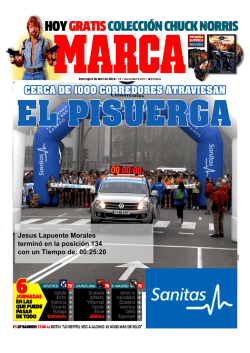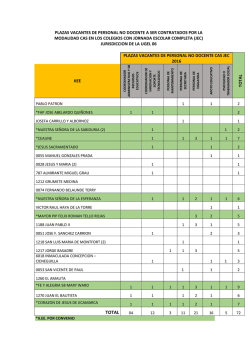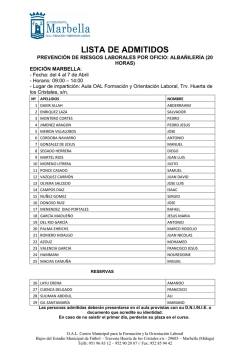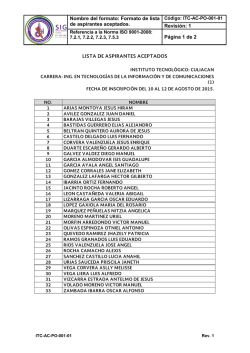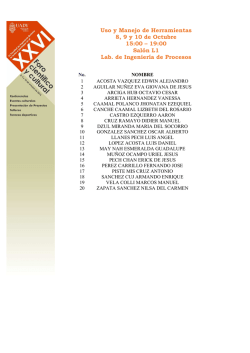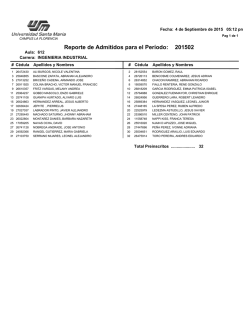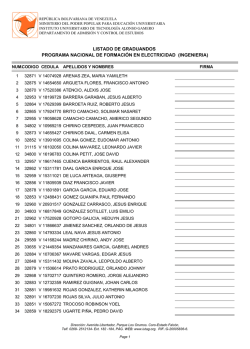
John 1:29-34 - Father Sam Rosales
Juan 1:29 - 34 29 En aquel tiempo, vio Juan el Bautista a Jesús, que venía hacia él, y exclamó: “Éste es el Cordero de Dios, el que quita el pecado del mundo. 30 Éste es aquel de quien yo he dicho: ‘El que viene después de mí, tiene precedencia sobre mí, porque ya existía antes que yo’. 31 Yo no lo conocía, pero he venido a bautizar con agua, para que él sea dado a conocer a Israel”. 32 Entonces Juan dio este testimonio: “Vi al Espíritu descender del cielo en forma de paloma y posarse sobre él. 33 Yo no lo conocía, pero el que me envió a bautizar con agua me dijo: ‘Aquel sobre quien veas que baja y se posa el Espíritu Santo, ése es el que ha de bautizar con el Espíritu Santo’. 34 Pues bien, yo lo vi y doy testimonio de que éste es el Hijo de Dios”. Palabra del Señor John 1:29 - 34 29 The next day John the Baptist saw Jesus coming toward him and said, “Behold, the Lamb of God, who takes away the sin of the world. 30 He is the one of whom I said, ‘A man is coming after me who ranks ahead of me because he existed before me.’ 31 I did not know him, but the reason why I came baptizing with water was that he might be made known to Israel.” 32 John testified further, saying, “I saw the Spirit come down like a dove from the sky and remain upon him. 33 I did not know him, but the one who sent me to baptize with water told me, ‘On whomever you see the Spirit come down and remain, he is the one who will baptize with the Holy Spirit.’ 34 Now I have seen and testified that he is the Son of God.” Gospel of the Lord Reflections on John 1:29 - 34 Reflexiones en Juan 1:29 - 34 by Fr. Sam Rosales, S.J. Jan. 15, 2017 Today is the Second Sunday of Ordinary Time. In the Gospel John the Baptist calls Jesus the “Lamb of God.” We will examine the Old Testament background to understand that title. And we will make a few observations on the Baptism of the Lord. Hoy es el segundo domingo del Tiempo Ordinario. En el Evangelio Juan Bautista llama a Jesús el “Cordero de Dios.” Vamos a examinar el Antiguo Testamento para comprender mejor ese titulo. Haremos algunas observaciones acerca del Bautismo del Señor. In the Book of Exodus 12:11-13 in the last of the plagues the Angel of Death slays the first-borns of the Egyptians. The Israelites are spared because they are marked by the blood of the Lamb. Thereafter the Jews remembered this event every year by the Feast of Passover (John 2:13). En el Libro de Éxodo 12:11-13 en la ultima plaga los primogénitos de los Egipcios son matados por el Ángel de La Muerte. Los Israelitas son dispensados porque estaban marcados con la sangre del Cordero. Después de esto cada año se recordaba esto con la Fiesta de Pascua (Juan 2:13). Note that St. Paul calls Jesus the “Passover Lamb” (1 Corinthians 5:7). “Get rid of the old yeast that you may be a new batch without yeast. For Christ our Passover Lamb as been sacrificed. Keep the Festivals, not with the old yeast of malice and wickedness, but with the bread without yeast, the bread of sincerity and truth. Noten que San Pablo le llama a Jesús el “Cordero Pascual” (1 Corintios 5:7). “Echen fuera esa vieja levadura que los corrompe, para que sean como el pan hecho de masa nueva y sin levadura que se come en la fiesta de Pascua, lo que en realidad son ustedes. Porque Cristo, que es el Cordero de nuestra Pascua, fue muerto en sacrificio por nosotros.” In the Old Testament, Origen (Commentary on the Gospel of John 6:264) notes that five types of animals were offered in the Temple: (a young bull, a sheep, a goat, a turtledove, and a pigeon). There are three types of sheep: a ram, the ewe, and the lamb. It is the lamb that was offered in the perpetual sacrifice (Exodus 29:38-44). En el Antiguo Testamento, Origen (en Comentario sobre el Evangelio de Juan 6:264), nota que en el Antiguo Testamento cinco tipos de animales eran ofrecidos en el Templo : (el toro joven, la oveja, el cabrito, la tórtola, y el pichón). Había tres clases de ovejas: el carnero padre, la hembra del carnero, y el cordero. El cordero era lo que se ofrecía en sacrificio perpetuo (Éxodo 29:38-44). When the early Christians saw how Jesus died, they remembered Isaiah 53:7, which says: he “was led as a sheep to the slaughter and was dumb as a lamb before its shearer.” Jesus in silence obeyed the Father’s will: he died like in a slaughter on behalf of the world, purchasing us with his own blood. Cuando los primeros Cristianos vieron como Jesús murió, se recordaron de Isaías 53:7, que dice: “Maltratado aguantaba, como cordero llevado al matadero, como oveja muda ante el esquilador, no abría la boca.” Jesús obedeció la voluntad del Padre en silencio. Murió como en un matadero por parte del mundo entero, pagando el precio de nuestra salvación con su sangre preciosa. And he did it willingly, lovingly. “No one takes my life from me, but I lay it down, and I have power to take it up again” (John 10:18). At the Last Supper, Jesus told us he did it out of love: “Greater love has no man than this, that a man lay down his life for his friends” (John 15:13). This is celebrated at the Holy Sacrifice of the Mass. Y lo hizo de buena gana, con amor. “Nadie me quita la vida, yo la doy voluntariamente. Está en mi mano desprenderme de ella y está en mi mano recobrarla” (Juan 10:18). En la Ultima Cena Jesús nos dijo que lo hacia por amor. Dijo: “No hay amor más grande que dar la vida por los amigos” (Juan 15:13). Esto se celebra en el Santo Sacrificio de la Misa. Jesus the Lamb of God replaces the scapegoat. In Leviticus 16:9 one goat was offered in sacrifice as a sin offering. Aaron would take another goat and confess over him the iniquities of Israel, and all their transgressions, and all their sins. Then he would send it into the wilderness. In this way they thought they could get rid of their sins. Jesús el Cordero de Dios reemplace al chivo expiatorio. En el Libro de Levítico 16:9 un chivo era ofrecido como ofrecimiento por los pecados. Aarón tomaba otro chivo y confesaba sobre él las iniquidades de Israel, y todas sus transgresiones, y todos sus pecados. Entonces la mandaban al desierto. Así pensaban que eliminaban a sus pecados. Hebrews 10:11 says the Old Testament sacrifices were ineffective. Only the sacrifice of Jesus takes away our sins. And he gave his life for us on the cross, so that our sins would be forgiven. Hebreos 10:11 dice que los sacrificios del Antiguo Testamento eran inefectivos. Solo el sacrificio de Jesús quita los pecados. Y él dio su vida por nosotros en la cruz, para que nuestros pecados fueran perdonados. The Book of Hebrews 5:5-11, has much to say about the priesthood of Jesus, and what he suffered as the Lamb of God. “Christ did not exalt himself to be made a high priest, but was appointed by him who said to him, “You are my Son, today I have begotten you… You are a priest forever, after the order of Melchizedek.” In the days of his flesh, Jesus offered up prayers and supplications, with loud cries and tears, to him who was able to save him from death, and he was heard for his godly fear. El Libro de Hebreos 5:5-11, tiene mucho que decir acerca del sacerdocio de Jesús, y lo que sufrió como Cordero de Dios. “Cristo no se apropio la gloria del Sumo Sacerdocio, sino que la tuvo de quien le dijo: Hijo mío eres tu; Yo te he engendrado hoy. Como también dice en otro lugar, Tu eres sacerdote para siempre, a semejanza de Melquisedec. El cual, habiendo ofrecido en los días de su vida mortal ruegos y suplicas con poderoso clamor y lagrimas al que podía salvarle de la muerte, fue escuchado por su actitud reverente. Although he was Son, he learned obedience through what he suffered; and being made perfect he became the source of eternal salvation to all who obey him, being designated by God a high priest after the order or Melchizedek. About this, there is much to say which is hard to explain.” Y aun siendo Hijo, aprendió la obediencia por lo que padeció, y llegado a la perfección, se convirtió en causa de salvación eterna para todos los que le obedecen, proclamado por Dios Sumo Sacerdote a semejanza de Melquisedec. Sobre este particular, hay mucho que decir, aunque difícil explicar.” At Mass the priest repeats the words of Jesus in the words of consecration: “Take and eat; this is my Body… Take this all of you, and drink from it: this is the cup of my Blood, the Blood of the new and everlasting covenant. It will be shed for you and for all so that sins may be forgiven” (Matthew 26:26-28). En la Misa el sacerdote repite las palabras de Jesús con las palabras de la consagración: “Tomen y coman; esto es mi Cuerpo... Tomen esto y beban todos, que esto es la Sangre de la alianza nueva y eterna, que será derramada por ustedes y por muchos para el perdón de los pecados” (Mateo 26:26-28). Jesus truly does take away our sins. At Holy Mass, after the Our Father, we always repeat three times: “Lamb of God, who takes away the sins of the world, have mercy on us! ” Amen! Alleluia! Joy! Jesús verdaderamente nos quita los pecados. En la Santa Misa, después del Padre Nuestro, repetimos tres veces: “Cordero de Dios, que quitas los pecados del mundo, ¡ten piedad de nosotros! ” ¡ Amen ! ¡ Alleluia ! ¡ Joy ! All four Gospels mention the Baptism of the Lord. The heavens were opened and the Spirit came down upon Jesus “like a dove”. Pope Emeritus Benedict XVI says the word “like” suggests it is a simile for something that ultimately cannot be described. The ineffable mystery of the Blessed Trinity begins to emerge. In Matthew 28:19 Jesus says: “Go and make disciples of all nations, baptizing them in the name of the Father, and of the Son, and of the Holy Spirit.” That is the way to become a Christian ! Los cuatro Evangelios mencionan el Bautismo del Señor. Los cielos se abrieron y el Espíritu descendió sobre Jesús: “Como una paloma”. El Papa Emérito Benedicto XVI dice que la palabra “como” sugiere que es un símil para algo que en última instancia no se puede describir. Empieza a surgir el inefable misterio de la Santísima Trinidad. En Mateo 28:19 Jesús dice: “Id y haced discípulos de todas las naciones, bautizándolos en el nombre del Padre, y del Hijo, y del Espíritu Santo.” ¡ Ése es el camino para llegar a ser Cristiano !
© Copyright 2025
